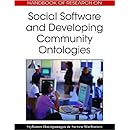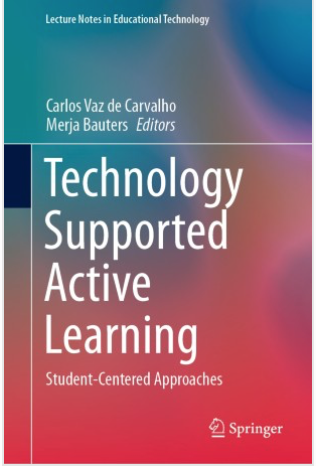
Differences of scaffolding in communities and networks
December 29, 2012I think that we expect that our empirical cases are like communities of practice, but it may be that not all the characteristics of such community are at present and they are rather knowledge collectivities or constellations of communities of practice, and eventually the Learning Layers project can help the target groups to create a real community of practice by aiding the shared knowledge-base to be developed.
Scaffolding in the community of practice is a form of enculturation – an alignment (establishing the congruence) to the dispositional knowledge of the community .
Scaffolding in the constellation of communities or in project-based companies (in knowledge collectivities) is facilitation of finding who knows what in the network and how do they do it in the specific goal-directed context.
Does finding the network-partners meet the criteria for scaffolding concept? However, the personal nature of scaffolding in the network suits with the traditional understanding of scaffolding.
——————-
I have taken our last concept map, that we composed with Mart Laanpere and Tobias Ley and added the differences of knowledge communities and knowledge collectivities based on Lindkvist (2005) paper.
————
Knowledge Communities and Knowledge Collectivities: A Typology of Knowledge Work in Groups
Lars Lindkvist
Linköping University, Sweden
Journal of Management Studies 42:6 September 2005
COMMUNITY OF PRACTICE
In the communities of practice that are ‘tightly knit’ groups (Brown and Duguid, 1998)
– the ‘dense relations of mutuality’, ‘strong’ social bonds (because community of practice members trust each other both personally and regarding their competences),
– the negotiated, joint enterprise ‘defined by the participants in the very process’ (cognition is shared at high degree)
.- a shared repertoire including ‘routines, words, tools, ways of doing things,stories, gestures, symbols, genres, actions, or concepts . . .’, and
– shared understandings enable cohesiveness (Lave and Wenger, 1991; Wenger, 1998)
A community involves both affect-laden social relationships and a substantial degree of shared ideational or cognitive communality, having emerged over a lengthy period of time (Etzioni, 1996).
Relevant knowledge resides in practice, not in the master. Mastery resides not in the master but in the organization of the community of practice of which the master is a part (Lave and Wenger,1991). In the communities of practice we are confronted with highly complex and ambiguous knowledge that can only be decoded through a lengthy period of actual practising.
We are thus confronted with a kind of embodied knowledge or competence to behave. Communities rely on ‘dispositional know-how’ created out of practice and held by the community as a whole.
Neither the master nor the apprentice is conceived of as self-conscious and knowledgeable agents. Instead knowledge inheres situatedly in practice and creeps into and occupies the community members when they work together. In the communities of practice learners ‘do not receive or even construct abstract, “objective” individual knowledge; rather, they learn how to function in a community’ (p. 48). As a result they are being ‘enculturated’ (Brown et al., 1989) rather than educated. In communities of practice the apprentice, enjoying a legitimate peripheral participation, gradually approaches a status of full membership by both ‘absorbing and being absorbed’ in the culture of praxis (Lave and Wenger, 1991, p. 95).
In communities of practice, congruence with established practice or paradigms is what matters.
CONSTELLATIONS OF INTERRELATED COMMUNITIES OF PRACTICE
A firm or a project group, merely represent boundary objects, a method of interconnecting communities ‘by which a set of practices manages itself as a constellation of practices’ (Wenger, 1998, p. 247). The designated ‘constellations of interrelated communities of practice’ (Wenger, 2000, p.229) are:
– sharing historical roots,
– having related enterprises,
– sharing artefacts,
– having the proximity of interaction
– having overlapping styles of discourses
KNOWLEDGE COLLECTIVITY
Goodman and Goodman (1976, p. 494) discuss temporary systems as a ‘set of diversely skilled people working together on a complex task over a limited period of time’. In temporal networks (project communities, loosely tied communities) – ‘the collectivities of practice’ (Lindkvist, 2005) – the shared understandings and knowledge are not so well developed.
Projects comprise members representing different specialties with different knowledge bases and ways of interpreting experiences. In such contexts there is thus a very limited overlap of knowledge bases, and little time to erect communal knowledge during the lifetime of a project. There is hardly time to learn together long enough to develop communal knowledge, and neither do project teams tend to become ‘tightly knit groups’ or ‘communities’ in a social-structural sense.
A ‘knowledge collectivity’ is an organization that is able to operate on ‘distributed’ knowledge. Instead of being shared among community members, the knowledge base is highly dispersed and individualized among collectivity members. Rather than relying on ‘decentred’ knowledge, project groups must be able to operate on knowledge that is radically dispersed, distributed or individualized, being impossible to gather or comprehend for any single, overseeing mind (Becker, 2001; Hayek, 1945; Tsoukas, 1996).
In such distributed contexts, it is important that members know ‘who knows what’ in a ‘transactive memory’ fashion (Wegner et al., 1991). This makes it possible for them to use each other as external memories, facilitating for example knowing where to start the search process when problems turn up within projects. Knowledge is then activated and exchanged, in a spontaneous manner, at the point of time it is needed.
Instead of erecting and codifying a communal knowledge base as in the communities of practice, firms relying on such a largely informal ‘network memory’ infrastructure thus tend to let knowledge ‘stay in place’ and encourage people to learn how to search for relevant knowledge (Lindkvist, 2004).
When circumstances change fast, people should not look too much inwards and backwards, to ‘our’ identity and history (as in communities of practice). Instead they should look outwards, to what customers want, to the task at hand and forward at what might be achieved. Individual learning in such contexts will to a great extent reflect the goal-directed problem-solving trajectory people engage in.
In comparison with the knowledge community, greater reliance is placed on individual agency in the knowledge collectivity. Relying on their knowledge of ‘who knows what’, they approach others with their problems and their ideas about possible solutions, hoping that the experience, knowledge, intuitions or criticism of others would help them change their way of thinking about their problems, entering new, more promising lines. The fact that others have been around for a long time, or know the narratives, is no guarantee for relevant knowing. Often newcomers may know more than old-timers, and quickly learn what these know.
By using each other as external memories and partners in the co-evolution of knowledge, project members are able to engage in deliberate, goal-directed, trial-and-error processes (Lindkvist and Söderlund, 2002).
As discussed by Potts (2001, p. 418) markets are experimental spaces, ‘spaces where existing knowledge is coordinated and where new knowledge is tested’. We may think of problem-solving processes within projects as taking place within such a ‘marketplace’, where ideas compete for attention and where individuals continuously look for new ideas and criticism that might help them solve their problems. While their fellows in the knowledge community are ‘enculturated’, the individuals in the knowledge collectivity are subjected to specified goals, granting them unrestricted ‘entrepreneurship’ as to how these may be reached.











Dear Kai,
I wonder if it would be interesting and valuable enough for you to introduce the distinction between ‘knowledge construction’ and ‘knowledge building when it comes to the concept of scaffolding. Looking at knowledge workers within the knowledge collectivity, they probably operate like members of an ad hoc transient communities, who reuse the existing dispersed knowledge by tapping and recombining it. This differs from the way knowledge can be ‘build’ (see Suthers, 2006 referring to Bereiter & Scardamalia), i.e. cultural capital can be increased through the collective agency of the community members.
I believe it takes more than finding the network partners, i.e. the nodes in the collectivity. Next to finding them (and tapping their knowledge) it takes more effort and affordances to enable knowledge building.
Dear Paolo,
i think you are right – as we will probably need both kind of knowledge in our scaffolding model (the decentred knowledge and distributed (person-centred) knowledge), we will need also knowledge building as well as knowledge construction (as social constructivism?).
Looking briefly at the constructivism concept i find interesting and coherent with the reviewed paper this aspect in the knowledge collectivities:
– knowledge construction is acting upon the environment to both ‘acquire and test new knowledge’, arriving at his or her version of the truth, influenced by his or her background, culture, social interactions.
I see that the nature of the goal is in the focus in Layers’ cases: is it “constructing person-centered messages to accomplish one’s goal” or is ‘the goal a joint, negotiated enterprise’.
Dear Kai,
Looking at the concept of Layers it might be interesting to further study the way Suthers elaborated different epistemologies. In doing so, in his article on CSCL from 2006, he comes up with the following four theoretically underpinned ‘layers’:
knowledge construction (#1) recognizes that individuals create meaning for themselves rather than just receiving it preformed from others; collaborative knowledge construction (#2) more specifically locates this meaning-making in a group context; intersubjective learning (#3) further specifies that the process of meaning-making is itself constituted of social interactions; and knowledge building (#4) requires that this group-based meaning-making is being done intentionally.
This approach of layers is probably comparable with your distinction between ‘personal goals’ and ‘common goals’ (that have to be negotiated).
[…] Next, we started to think that there are differencies between communities of practice and so called knowledge collectivities. […]